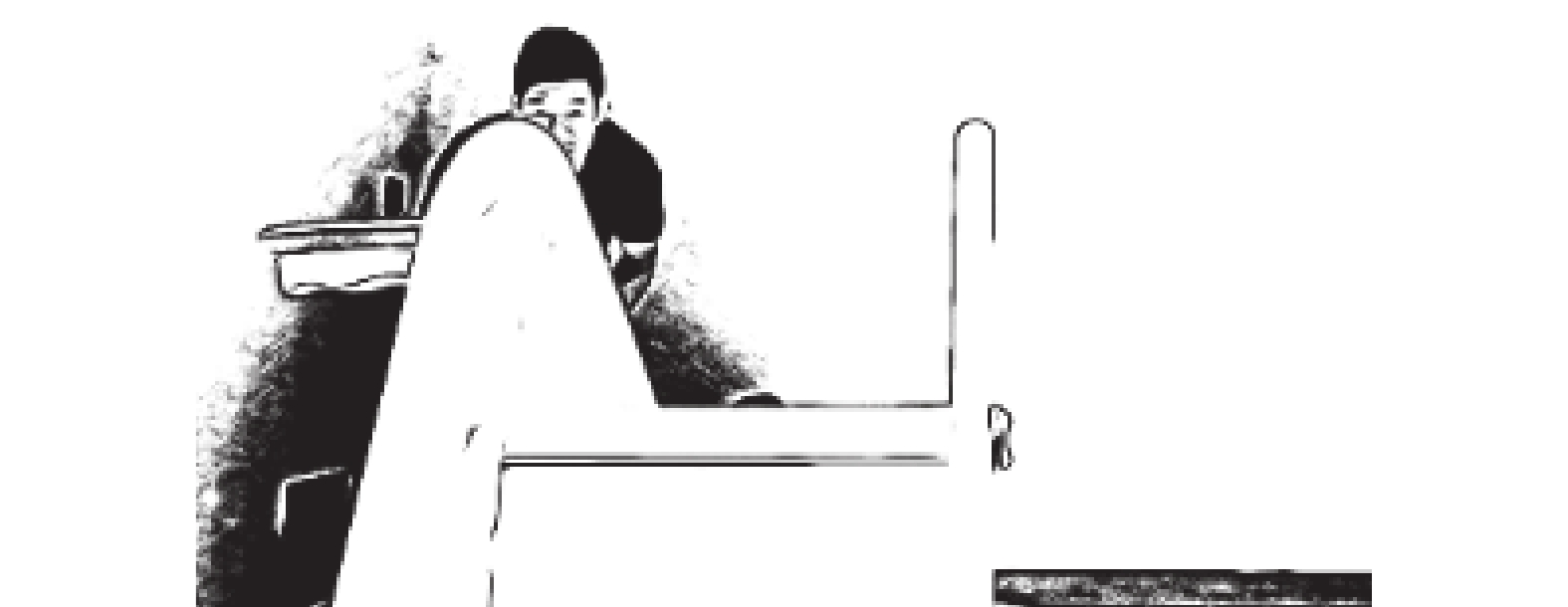A Multi-modal Conversation Analytic Study on Child-initiated Directives in Family Iteractions
-
摘要: 亲子互动是儿童社会化的重要场所。现有研究主要基于宏观社会学视角,缺乏对互动本身在微观细节上的关注。为了进一步窥探儿童社会化的过程,研究以四个家庭的日常亲子互动为语料,从多模态会话分析视角对儿童发起的指令性行为序列进行了观察与分析,包括儿童如何发起指令、父母如何回应以及双方在交际过程中观照的因素。研究发现儿童能够结合具体情境推断其指令被服从的可能性,并据此选择相应的话轮设计;而父母回应儿童的指令时则会观照不同层面的社会规范,甚至会做出看似矛盾实则协调的、多模态的交叉式优先回应。此外,研究发现表明,儿童在社会化过程中并非被动的接受者,而是同父母一道在亲子互动的过程中积极践行社会化。Abstract: Parent-child interaction is a key site for children’s socialization. Mainly based on the macro-sociological perspective, existing research on parent-child interaction has not paid sufficient attention to the minute details of the interaction. To further explore child socialization in family, the current study has conducted a multi-modal conversation analytic study on child-initiated directive sequences, investigating how children initiate directives, how parents respond, and what are oriented to by both parties. It is evidenced that children can take the contingency of parents’ compliance into consideration and design their directives correspondingly. Besides, cross-cutting preferences are noticed in parents’ responses due to their orienting to several contradicting social norms. As for children’s socialization, instead of passively being socialized, children indeed, together with their parents, actively practice socialization in parent-child interaction.
-
Key words:
- directives /
- parent-child interaction /
- conversation analysis /
- preference organization /
- socialization.
-

图 1 ③

图 2
例3. [PCI-LQY/拿勺子/04:07-05:30] 1 K1: → 给我拿个勺:子. (8.7s)M1 用筷子夹了一片胡萝卜到K1碗的上方并保持,直到第6行话轮结束才将胡萝卜放入K1碗中 2 (0.9) 3 K1: +妈妈 (给你). + +左手拿叉子举向妈妈+ 4 (0.6) 5 M1: 你拿着那个叉子吃胡 6 萝卜. 转写体例说明: (0.6) 沉默时长,单位为秒。若沉默出现在话轮转换相关处,则会在客观测量的时长基础上减去话轮转换的一般间隔0.2秒; (.) 小于0.2秒的短暂沉默; = 表示前后话语的紧密衔接。一般成对出现,一个在转写中一行话的末尾,另一个在一行的开头。单独使用时常用在话轮转换相关处,表示新话轮构建单位的骤然增加; [ ] 标记话语重叠; [
[用于不同交际者的话轮,标记重叠开始位置; ]
]用于不同交际者的话轮,标记重叠结束位置; . ? , ¿
°°“.”表示降调;“?”表示升调;“,”表示声调较平或略微上升;“¿”表示声调上升幅度介于“?”和“,”之间度数符号内的话语音量低于同一说话人的前后话语,若音量远低于前言后语则用重复度数符号表示,如“°°还要°°”; ↑ 表示音调的突然升高; 我- “-”表示声音的突然中断; 是::: “:::”表示音节的拖长,每一个“:”一般代表0.1~02秒的拖长; > < 框起来的话语被压缩表述,语速明显快于正常节奏; < > 框起来的话语被缓慢表述,语速明显慢于正常节奏; 特色 下划线表示强调的说话方式,包括响度增加或音调升高; .hhh 吸气音,一个“h”代表0.1~0.2秒; hhh 呼气音,一个“h”代表0.1~0.2秒; hehehe, 哈哈 笑声。根据实际的笑声可以用“哈”、“嘿”、“呵”等,也可借助英文huhhuh,hehe等来尽可能还原真实笑法; .tch “啧”音,表咂舌; (( )) 双括号内为研究者给出的描述,而非对交际的如实转写; 威:/九: 交际者标签,通常一个话轮对应一个标签; ^ ^/* */+ + 用于标示肢体动作与话语的重叠; − − − 表示肢体动作的保持或延续; 身体靠向椅背 斜体字是对肢体动作的描述。 -
[1] CLAUSEN J A. Socialisation and Society [M]. Boston: Little Brown and Company, 1968. [2] JAMES A & PROUT A. Constructing and Reconstructing Childhood: Contemporary Issues in the Sociological Study of Childhood [M]. London: Falmer Press, 1990. [3] 左鹏,史金玲. 农村留守儿童的成长障碍与社会支持系统构建−来自四川W县的调查[J]. 北京科技大学学报(社会科学版),2010,26(1):32-36. doi: 10.3969/j.issn.1008-2689.2010.01.007 [4] 李伟,孔凡靖. 家庭教育权在预防未成年人沉迷网络行为中的实现路径−以《家庭教育促进法》第二十二条为中心[J]. 北京科技大学学报(社会科学版),2022,38(6):695-705. [5] GOODWIN M H. Participation,affect,and trajectory in family directive/response sequences [J]. Text and Talk, 2006, 26(4-5):515-543. doi: 10.1515/TEXT.2006.021 [6] BROWN P & LEVINSON S C. Politeness: Some Universals of Language Usage [M]. Cambridge: Cambridge University Press, 1987. [7] GOFFMAN E. Interaction Ritual: Essays on Face to Face Behavior [M]. New York: Doubleday, 1967. [8] GOODWIN M H. He-Said-She-Said: Talk as Social Organization among Black Children [M]. Indianapolis: Indiana University Press, 1990. [9] 于国栋. 什么是会话分析[M]. 上海: 上海外语教育出版社, 2022. [10] ERVIN-TRIPP S. Is Sybil there? The structure of some American English directives [J]. Language in Society, 1976, 5(1):25-66. doi: 10.1017/S0047404500006849 [11] SEALEY A. ‘Don’t be cheeky’:requests,directives and being a child [J]. Journal of Sociolinguistics, 1999, 3(1):24-40. doi: 10.1111/1467-9481.00061 [12] CURL T S & DREW P. Contingency and action:a comparison of two forms of requesting [J]. Research on Language and Social Interaction, 2008, 41(2):129-153. doi: 10.1080/08351810802028613 [13] DREW P. Asymmetries of knowledge in conversational interactions [C] // MARKOVA I & FOPPA K. Asymmetries in Dialogue. Hemel Hempstead: Harvester Wheatsheaf, 1991: 21-48. [14] HERITAGE J. Epistemics in action:action formation and territories of knowledge [J]. Research on Language and Social Interaction, 2012, 45(1):1-29. doi: 10.1080/08351813.2012.646684 [15] STEVANOVIC M & PERAKYLA A. Deontic authority in interaction [J]. Research on Language and Social Interaction, 2012, 45(3):297-321. doi: 10.1080/08351813.2012.699260 [16] STEVANOVIC M. Deontic Rights in Interaction: A Conversation Analytic Study on Authority and Cooperation [D]. Helsingin: Helsingin yliopisto, 2013. [17] ANTAKI C & KENT A. Offering alternatives as a way of issuing directives to children:putting the worse option last [J]. Journal of Pragmatics, 2015, 78:25-38. doi: 10.1016/j.pragma.2015.01.004 [18] CRAVEN A & POTTER J. Directives:entitlement and contingency in action [J]. Discourse Studies, 2010, 12(4):419-442. doi: 10.1177/1461445610370126 [19] GOODWIN M H & CEKAITE A. Calibration in directive/response sequences in family interaction [J]. Journal of Pragmatics, 2013, 46(1):122-138. doi: 10.1016/j.pragma.2012.07.008 [20] WARING H Z. Conditional granting in Parent-child interaction at mealtimes [J]. Journal of Pragmatics, 2020, 167:116-130. doi: 10.1016/j.pragma.2020.05.014 [21] KENT A. Compliance,resistance and incipient compliance when responding to directives [J]. Discourse Studies, 2012, 14(6):711-730. doi: 10.1177/1461445612457485 [22] FRICK M & PALOLA E. Deontic autonomy in family interaction: directive actions and the multimodal organization of going to the bathroom [J/OL]. Social Interaction. Video-Based Studies of Human Sociality (2022-02-21) [2022-11-13]. https://tidsskrift.dk/socialinteraction/article/view/130870. [23] STEVANOVIC M. Participants’ deontic rights and action formation:the case of declarative requests for action [J]. Interaction and Linguistic Structures (InLiSt), 2011, 52:1-37. [24] POMERANTZ A & HERITAGE J. Preference[C]// STIVERS T & SIDNELL J. The Handbook of Conversation Analysis. Chichester: Wiley-Blackwell, 2012: 210-228. [25] BRUMARK A. Behaviour regulation at the family dinner table. The use of and response to direct and indirect behaviour regulation in ten Swedish families [J]. Journal of Child Language, 2010, 37:1065-1088. doi: 10.1017/S0305000909990201 [26] JEFFERSON G. Glossary of transcript symbols with an introduction [C] // LERNER G. Conversation Analysis: Studies from the first generation. Amsterdam: John Benjamins, 2004: 13-31. [27] MONDADA L. Conventions for Multimodal Transcription [Z/OL]. (2019-11) [2022-11-13]. https://www.lorenzamondada.net/_files/ugd/ba0dbb_986ddd4993a04a57acf20ea06e2b9a34.pdf. [28] CASTELFRANCHI C & FALCONE R. From automaticity to autonomy: the frontier of artificial agents [C] // HEXMOOR H, CASTELFRANCHI C, & FALCONE R. Agent Autonomy. Boston: Springer, 2003: 103-136. [29] POMERANTZ A. ‘Telling my side:“Limited Access” as a “Fishing” device’ [J]. Sociological Inquiry, 1980, 50(3-4):186-98. doi: 10.1111/j.1475-682X.1980.tb00020.x [30] CLIFT R. Conversation Analysis [M]. Cambridge: Cambridge University Press, 2016. [31] SCHEGLOFF E A,JEFFERSON G & SACKS H. The preference for self-correction in the organization of repair in conversation [J]. Language, 1977, 53(2):361-382. doi: 10.1353/lan.1977.0041 [32] SCHEGLOFF E A. Sequence Organization in Interaction: A Primer in Conversation Analysis [M]. Cambridge: Cambridge University Press, 2007. [33] ROBINSON J D. Accountability in Social Interaction [M]. New York: Oxford University Press, 2016. [34] GEORGE Y. The Study of Language [M]. Cambridge University Press, 2000. [35] NINIO A. Language and the Learning Curve: A New Theory of Syntactic Development [M]. Oxford; England: Oxford University Press, 2006. [36] TOMASELLO M. Do young children have adult syn-tactic competence? [J]. Cognition, 2000, 74(3):209-253. doi: 10.1016/S0010-0277(99)00069-4 -




 下载:
下载:


